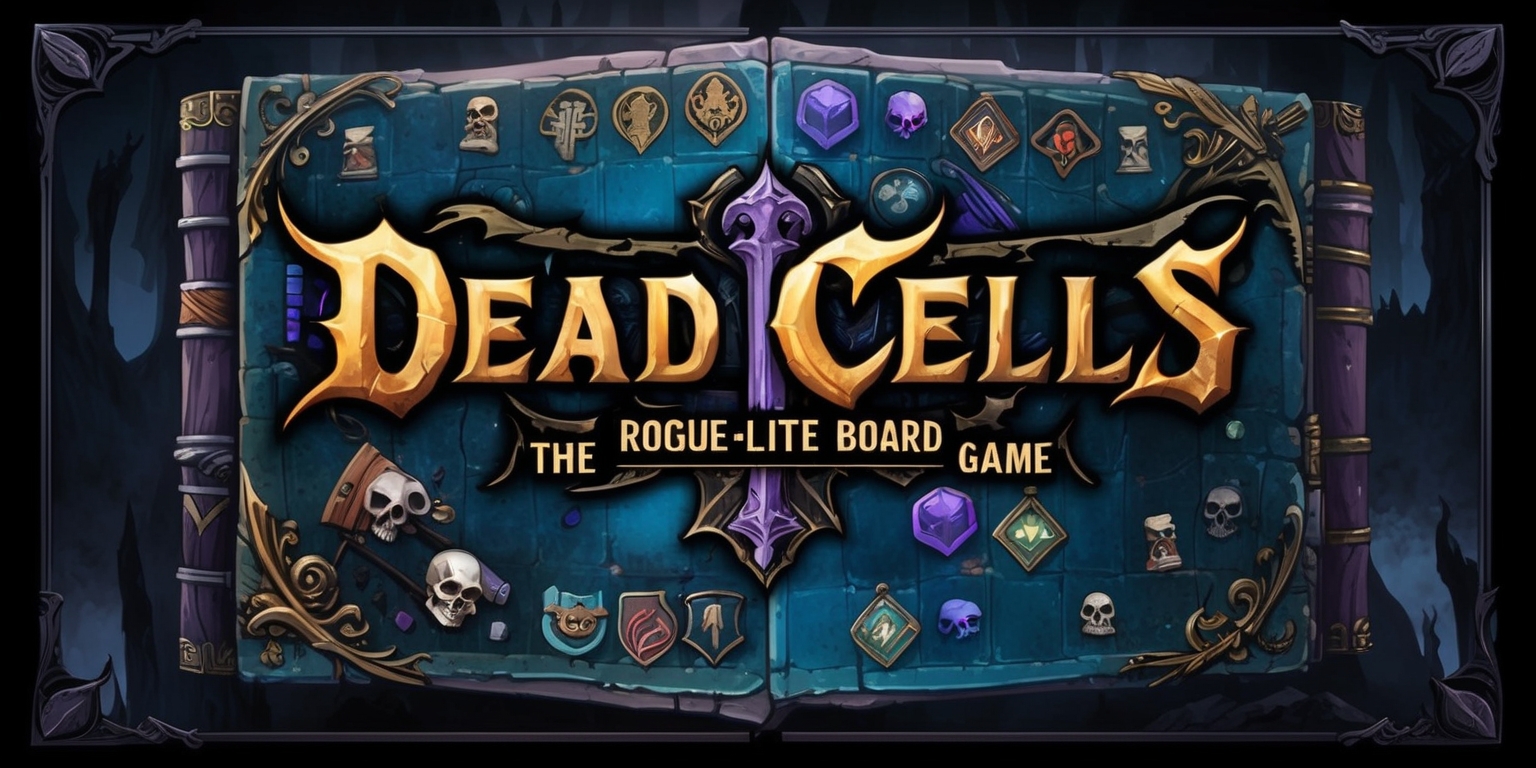Exploring the Depths: A Journey Through Dead Cells The Rogue-Lite Board Game
- May 16, 2025
- 1106

In recent years, tabletop adaptations of popular video games have gained momentum, inviting fans to experience beloved digital worlds in a physical format. One such adaptation is the board game version of the hit action-platformer, Dead Cells. This unique game brilliantly translates the iterative and challenging nature of its predecessor to a cooperative format designed for groups. In this examination, we will investigate the various intricacies of Dead Cells: The Roguelike Tabletop Game, examining its components, mechanics, and overall experience. This review will provide insights for avid board gamers and those who enjoy the video game, shedding light on what makes this adaptation both enjoyable and challenging.
Unpacking the Game
Dead Cells: The Rogue-Lite Board Game arrives within a container that embodies the core of its video game origins. Inside, players are greeted with an assortment of components that require careful organization. Before diving into gameplay, a little setup is in order. With the aid of clear instructions, players sort through a plethora of cards and tokens, placing them into conveniently provided compartments. The game employs a thoughtful design that enhances accessibility during subsequent play sessions; however, to prevent a chaotic spill of components, the box must be stored flat.
The Lack of a Central Board
A standout characteristic of this board game adaptation is the absence of a central game board. Instead, players will use smaller boards representing different biomes, each designed to immerse players further into the Dead Cells universe. Alongside these, additional boards facilitate combat scenarios and various action components. This structure allows for a flexible game space that can evolve according to the players' paths, making each session feel unique.
Component Quality and Art Design
The game components exude quality, from the robust cards to the intricate tiles. The comic-book style art resonates with the original video game's aesthetics while also providing a fresh interpretation. This visual cohesion not only invites players into the game world but also ensures that every element feels characteristic of Dead Cells. However, the clarity of the rules and player aids does leave room for improvement, as some text may pose confusion for newcomers.
Character Selection and Initial Setup

At the onset of the adventure, players choose their characters and take some initial combat cards. This selection is paramount, as each character comes equipped with unique strengths and skills. From here, players embark on their journey into the Prisoner’s Quarters—the first of several interconnected spaces. The design encourages exploration while balancing decision-making through the cooperative elements of play.
The Journey Begins: Exploring the Prisoner’s Quarters
As players navigate the Prisoner’s Quarters, they will encounter various hidden tiles, each representing potential treasures or adversaries. Gameplay is cooperative but driven by a first-player mechanic that empowers one participant to guide decisions. Such structure allows for shared experiences while preventing dominance by the more experienced gamers in the group.
Engaging Combat Mechanics
The combat encounters in Dead Cells are notably strategic. Each enemy, drawn from biome-specific cards, has designated health points, positions on the combat board, and distinct actions during combat rounds. Players must creatively use their combat cards to defeat opponents while considering the abilities of their characters, making each skirmish a tactical puzzle to unravel.
Dynamic Battle System
Combat is layered with complexity. Characters can launch various attacks with multiple effects, including status effects such as bleed or burn. Additionally, players can equip items that enhance their capabilities, introducing another layer of strategy. However, it’s important to note that the player count impacts combat dynamics, as balancing card usage can become tricky with different player numbers.
Game Difficulty and Permadeath
The Dead Cells board game captures the original game's unforgiving nature, where challenges mount quickly. Players soon find themselves overwhelmed as they traverse encounters that deal significant damage. With characters starting with limited life points, the stakes are high—one player's demise signals the end of the game, increasing tension within each mission.
Bonuses and Permanent Upgrades
Throughout the game, players collect valuable resources, from currency used at merchants to innovative equipment. However, these rewards are fleeting; players must rely on 'dead cells' that contribute to permanent upgrades, lending a crucial progression mechanic to the game. As players engage more deeply, unlocking blueprints empowers them to customize their gear choices, encouraging strategic planning for future expeditions.
The Draw of Incremental Progression
Part of the allure of Dead Cells: The Rogue-Lite Tabletop Game lies in its incremental progression. Each session feels rewarding as players strive to enhance their characters with permanent upgrades. However, the journey through repeated biomes can become a two-sided blade, resulting in a feeling of repetitive gameplay as players navigate familiar paths over and over.
The Dual Nature of Exploration
While progressing through biomes introduces new elements, the game often requires players to revisit previous boards, such as the Toxic Sewers, creating a cyclical experience. With repetition, enthusiasm can diminish; yet, this familiarity is sometimes vital in honing strategies and leveraging character skills to overcome formidable opponents.
Engagement Over Long Sessions
A notable aspect to consider is the time investment required to navigate this board game. Unlike quick feedback loops found in video games, the tabletop format transforms the iterative nature of gameplay into longer sessions filled with tactical decisions. Players must grapple with the balance of pacing their runs with the tactical depth of each encounter, which can require some adaptation for individuals who are used to to faster-paced gaming experiences.
Repetition versus Enjoyment
As players progress into the campaign, the earlier biomes can fade into the background, yet the repetitive nature of combat and exploration surfaces. Although the game introduces new equipment, skills, and encounters, the déjà vu of past encounters may diminish the overall pleasure of the gaming experience. The blend of excitement and familiarity becomes a juxtaposition players must navigate throughout their gameplay.
Exploring the Long-Term Appeal
Despite these challenges, Dead Cells: The Rogue-Lite Board Game offers a rich tapestry of engagement through its rewarding character evolution and dynamic combat encounters. With each play session, players can refine their strategies and explore new synergies, ultimately enhancing their enjoyment. Secrets await those who venture deeper into biomes, adding further layers to the journey and generating intrigue for what lies ahead.
Conclusion: A Challenging Yet Rewarding Adaptation
Dead Cells: The Rogue-Lite Board Game crafts an intriguing blend of cooperative gameplay, tactical combat, and incremental progression. While the challenges of repetitiveness and setup time might pose hurdles for some players, the overall experience captures the essence of the video game beautifully. For fans of strategy and cooperative challenges, this adaptation brings the fascinating world of Dead Cells to life on the tabletop, inviting players to explore its depths together while continually striving for success. Whether you are an experienced tabletop player or a passionate enthusiast of the original video game, there is much to enjoy in this collaborative adventure.